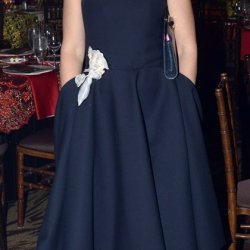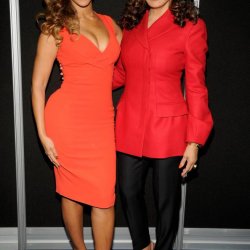‘If lesbians can marry, who will wear the dress?’

Australia is this close to achieving marriage equality, which means one less outdated policy for us to be embarrassed about internationally, and one more step taken on the road to equality.
But there is a much longer and more complex road to travel before diverse genders and sexualities will truly be understood, appreciated and celebrated by the mainstream. Even among progressives, subtle assumptions about gender abound and, interestingly, these often come up when LGBTI folk start to plan a wedding. Among the excitement and planning, irritating questions tend to pop up, detracting from the celebrations.
“You’re both wearing dresses, won’t that look weird?”
“You’re wearing a suit, why do you want to dress like a man?”
“If you want to marry someone who looks like a man, why don’t you just marry a man?”
For the record, the answers to those questions are “No,” “I don’t” and “Because I’m a lesbian” but that ain’t gonna fill my word count so I’ll extrapolate.
Wedding outfits are a symptom of a broader issue, in which people get baffled by queer gender presentation and androgyny. Despite decades of women wearing pants (and countless cultures where men wear skirts and dresses), we still cling to the illogical notion that people can dress “like” a particular gender. Wear a certain cut of trousers (or a suit to your wedding) and you’re dressing “like a man”.
Amy Middleton, editor of Australian journal of sexual diversity, Archer Magazine, married her wife, musician Cash Savage, earlier this year. She told me “A couple of people asked my wife whether she would wear a dress. This feels pretty misguided. If you’ve never seen someone in a dress before, why would you assume they would suddenly start to conform to that stereotype? That people feel the need to ask that question, to me, is an example of how desperately ingrained these gender myths have become.”
Is there an arbitrary points system that defines whether someone is feminine or masculine? Flat shoes? 2 points to masculine. Long hair? 3 points to feminine. A bow-tie? 1 point to masculine. Earning 75 cents to the dollar of your male counterparts? Ding, ding, ding, you win the woman-prize!
If we’ve learnt anything about gender in recent years, surely it’s that there’s much more to it than ‘man’ and ‘woman’. Could we finally, once and for all, allow individual human beings to define their own gender and dress in whatever they like without comment?
If anything, our heterosexual comrades should be inspired by queer weddings to mix things up a bit and celebrate their love in a way that’s truly unique to them. If you don’t think you look good in white, don’t wear white. If you find walking down an aisle a bit dorky, do what my friends did and get everyone to make a circle while you shout your vows to each other through loudhailers from either side (it was hilarious and cute).
When Kate married Kristie three years ago, she found the fact they were already breaking taboo freed them up to do as they pleased.
“We did away with a lot of the old marriage traditions. For example, no one was ‘given away’. We both wore what made us feel good. We actually thought about what we wanted and how we wanted to do it rather than just doing what was expected.”

PHOTO:cocktail dresses
Kate and Kristie at their wedding in New YorkFor Amy, putting on the big white dress was part of the fun. “Traditions are one of my guilty pleasures, and I tend to think I shouldn’t have to miss out on the dream wedding I planned as a kid, just because I ended up with a woman.”
“Performing those [heteronormative] roles around other people can feel political for me. It feels like we are challenging the status quo by taking standards and representing them differently. I have fun doing that, and our wedding felt like an extension of that dynamic.”
As the battle for marriage equality clearly demonstrates, weddings – and marriages – have a huge emotional, cultural and political significance for most people. But it’s important to remember that the movement for equality is about more than just replicating the norm; it can also be about challenging it, about examining the assumptions we make about men, women and sexuality.
As Amy says, “I’ve always found androgyny extremely attractive. Often I think it shows a sense of courage, individuality and strength to transcend society’s expectations day after day. I love the authenticity that can be found in people who bend those rules.”
read more:evening dresses






Ingen kommentarer endnu